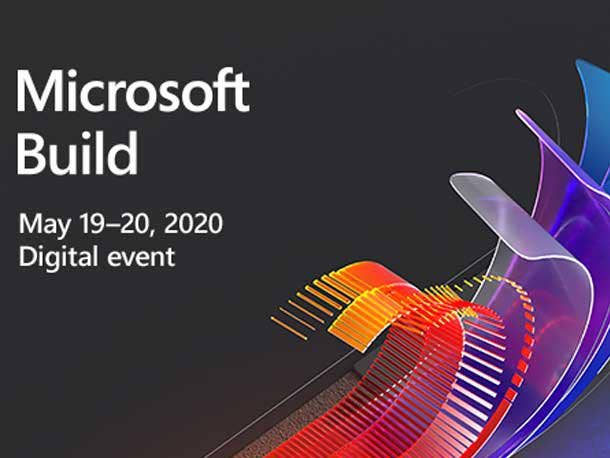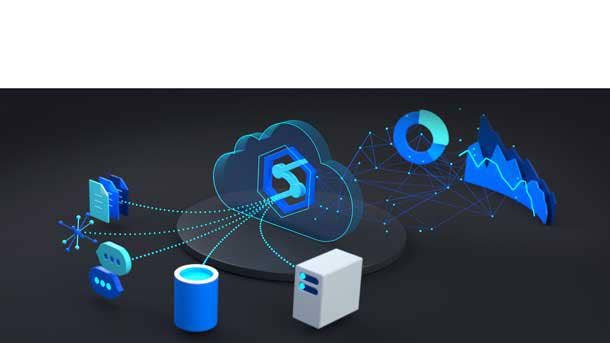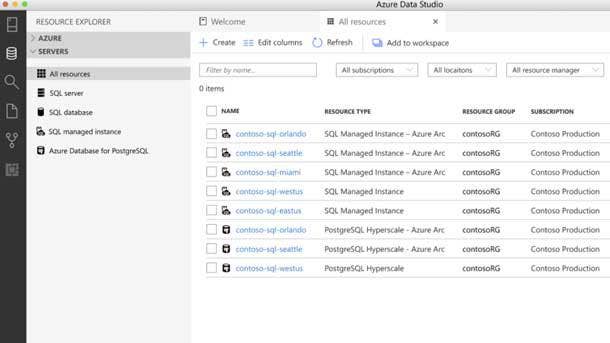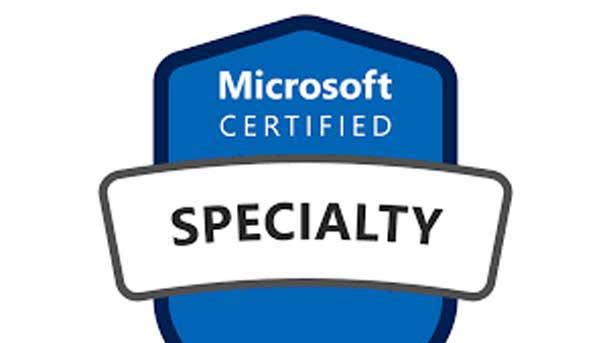6 Top Azure Announcements From Microsoft Build 2020
Major Azure announcements at Microsoft Build include the general availability of Microsoft’s Azure IoT Developer Specialty Certification and training resources.

Microsoft has built a new artificial intelligence supercomputer on its Azure cloud in collaboration with Open AI, and is rolling out a new Microsoft Cloud for Healthcare, the first of its planned industry-specific cloud solutions.
The two announcements are among multiple Azure-related developments that the No. 2 cloud computing provider is unveiling today as part of its Microsoft Build developers conference, which was shifted to a free 48-hour digital forum due to the coronavirus (COVID-19) pandemic. Microsoft reported more than 100,000 registrants for the event, which would make it the largest Build conference to date.
Microsoft believes its new supercomputer is one of the world’s most powerful, according to chief technology officer Kevin Scott.
“We believe that it's probably right around the fifth most powerful machine in the world,” Scott said. “And because we were leveraging all of our Azure infrastructure, we were able to deploy this system in a relatively short period of time, so six months from start to finish. We’re using (this machine) to train these big, self-supervised, deep neural networks that we're using as platforms for language technologies and vision and speech technologies.”
Other Build announcements include the debut of Azure Synapse Link, a cloud-native implementation of hybrid transactional analytical processing that Scott Guthrie, executive vice president of Microsoft’s cloud and AI group, called a “game-changer.”
Microsoft also is releasing updates to Azure Arc, which enables deployment of Azure services anywhere and extends Azure management to any infrastructure, and Azure Stack Hub, an extension of Azure that allows users to run apps in an on-premises environment and deliver Azure services in data centers.
Click through to read about the announcements, which also include the general availability of Microsoft’s Azure IoT Developer Specialty Certification and training resources.

AI Supercomputer
Microsoft’s new artificial intelligence (AI) supercomputer is designed to train extremely large distributed AI models.
Microsoft built the supercomputer in collaboration with and exclusively for OpenAI, an AI development and deployment company based in San Francisco, under a partnership announced last year.
Microsoft said the supercomputer is the first that leverages the power of the cloud. Hosted in Azure, it benefits from all of its cloud infrastructure capabilities, including rapid deployment, sustainable data centers and access to Azure services.
“The exciting thing about these models is the breadth of things they’re going to enable,” Scott said. “This is about being able to do a hundred exciting things in natural language processing at once and a hundred exciting things in computer vision, and when you start to see combinations of these perceptual domains, you’re going to have new applications that are hard to even imagine right now.”
The supercomputer is a single system with more than 285,000 CPU cores, 10,000 GPUs and 400 gigabits per second of network connectivity for each GPU server, according to Microsoft.

Microsoft Cloud for Healthcare
The new Microsoft Cloud for Healthcare is the first industry-specific cloud from Microsoft, which said additional clouds for other industries will be rolled out in the future.
The solution is designed to help hospitals and health care providers better manage patient and staff needs, empower collaboration among health teams, improve operational and clinical data insights, and deploy resources more efficiently.
Microsoft Cloud for Healthcare combines capabilities from Azure, Microsoft 365, Dynamics, Power Platform and Azure, using a common data model to allow sharing of data across applications and access to data analytics.
Beginning today, Microsoft Cloud for Healthcare is available through a public preview and free trial for the next six months, with general availability expected to start in the calendar fourth quarter.
Using the Microsoft Cloud for Healthcare, organizations can extend the value of Dynamics 365 Marketing, Dynamics 365 Customer Service and Azure IoT to deploy a consumer - friendly patient experience , connected physician and referral management, enhanced patient engagement portals, intelligent patient outreach and continuous patient monitoring through the internet of things (IoT).
“The Microsoft Cloud for Healthcare extends the value of existing Microsoft cloud services and Teams virtual visits, making it faster and easier for care teams to collaborate, communicate, coordinate care and generate insights that help improve patient outcomes and workflow effectiveness,” Tom McGuinness, Microsoft’s corporate vice president of worldwide health, and Dr. Greg Moore, corporate vice president of Microsoft health, said in a cowritten blog post.
And healthcare systems will be able to advantage of our Microsoft’s ecosystem of healthcare partners that can provide solutions that complement and extend core cloud capabilities, they said.
“Using these partners’ expertise will help organizations through EHR (electronic health record) and platform integrations, implementation services and healthcare SaaS offerings. McGuinness and Moore said.

Azure Synapse Link
Microsoft introduced Azure Synapse Link, a cloud-native implementation of hybrid transactional analytical processing (HTAP) that brings operational database services and Azure Synapse Analytics together in real-time with a single click, without managing data movement or placing a burden on customers’ operational systems, according to the cloud provider.
Now in public preview, it’s available in in Azure Cosmos DB and will be available in Microsoft’s other operational database services, such as Azure SQL, Azure Database for PostgreSQL and Azure Database for MySQL, in the future.
Microsoft previously unveiled Azure Synapse Analytics last November, removing the barriers between enterprise data warehousing and big data analytics to allow data professionals to more easily collaborate and build and manage their analytics solutions.
But one of the fundamental challenges in terms of looking at data faster is the amount of time it takes to copy the data from operational databases – “the thing that's powering your shopping cart or your order system into an analytic data warehouse,” Guthrie said.
“And typically organizations have to use a process called ETL to kind of extract, transform and load the data into a warehouse to do the analytics on it,” Guthrie said. “(Azure Synapse Link) allows you to take your analytics system with Azure Synapse and point it directly at your operational database and be able to do the exact same queries without having to copy the data. That enables real-time analytics, without impacting your online systems or your operational systems. That's kind of a game-changer, especially when you're dealing with lots of data at big scale.”
Gathering insights from real-time operational systems has always been a challenge, given the need to either load everything in memory or replicate the data quickly for traditional analysis, according to Chris Garvey, executive vice president of product at 2nd Watch, a Seattle-based consulting and managed service provider for infrastructure as a service.
“Azure Synapse Link appears to resolve this using the power of distributed cloud compute and persistence,” Garvey said. “It is exciting to see Microsoft continually innovating in the analytics space in the pursuit of bringing an instantaneous view of business metrics to customers without the usual inefficiencies."

New ‘Responsible’ ML Tools
Microsoft is providing new machine learning (ML) tools in Azure Machine Learning and its open source software toolkits to help customers use AI models more responsibly – and give them the ability to understand the ‘why’ behind what their AI models are telling them.
“Think about…why did you approve or deny a loan application?” Guthrie said. “That's a really important thing to be able to explain, both from a moral and from a legal perspective. But, traditionally, AI systems haven't had that. We're adding those kinds of capabilities into Azure, which is also kind of a first for many cloud providers."
The tools include new model interpretability and fairness assessment capabilities that enable development of more accurate and fair models, and confidential ML capabilities that provide a secure and trusted environment for ML.
Differential privacy computing capabilities, developed in collaboration with researchers at Harvard’s Institute for Quantitative Social Science and School of Engineering, allow customers to build ML models using sensitive data while safeguarding individuals’ information such as names or dates of birth.
“Developers are increasingly asked to build AI systems that are easy to explain and that comply with non-discrimination and privacy regulations,” Eric Boyd, corporate vice president of Microsoft Azure AI, said in a blog post.
Microsoft also has added new capabilities for fine-grained traceability, lineage and access control of data, models and experiments to enable organizations to meet strict regulatory requirements. And new workflow documentation capabilities to enforce accountability in the ML process will soon be available.
“It is very challenging to have a good sense of, ‘Hey, have I really assessed whether my model is behaving fairly?’ or ‘Do I really understand why this particular model is predicting the way it is?’” Boyd said.

Azure Arc And Azure Stack Hub Updates
Azure Arc-enabled Kubernetes clusters and Azure Arc-enabled SUSE Linux Enterprise Server are now in public preview.
Azure Arc-enabled Kubernetes lets customers inventory, organize, manage and govern their Kubernetes clusters at scale from Azure, including Azure Red Hat OpenShift, across their datacenters, multi-cloud and Azure Stack Hub. Azure Arc-enabled SUSE Linux Enterprise Server allows customers to inventory, organize, manage and govern their heterogenous environments, including SUSE Linux Enterprise Server, from Azure.
New Azure Stack Hub updates are designed to simplify fleet and resource management and enable graphics-heavy scenarios with GPUs. Azure Stack Hub Fleet Management, which is in private preview, gives customers a single view and management method from Azure for all of their Azure Stack Hub deployments. The Azure Kubernetes Service Resource Provider on Azure Stack also is in private preview. The fully managed service for easily managing containerized applications allows customers to automatically create and manage Kubernetes clusters on Azure Stack Hub.

Azure IoT Developer Specialty Certification
The Azure IoT Developer Specialty certification, announced in beta in January, now is generally available for developers with subject matter expertise in developing cloud and edge components of an Azure IoT solution.
Candidates for the certification must have experience implementing the Azure services that form an IoT solution, including data storage options, data analysis, data processing and platform-as-a-service options. They also should be able to recognize Azure IoT service configuration settings within the code portion of an IoT solution and perform specific IoT coding tasks in at least one Azure-supported language, including C#, Node, C or Python.